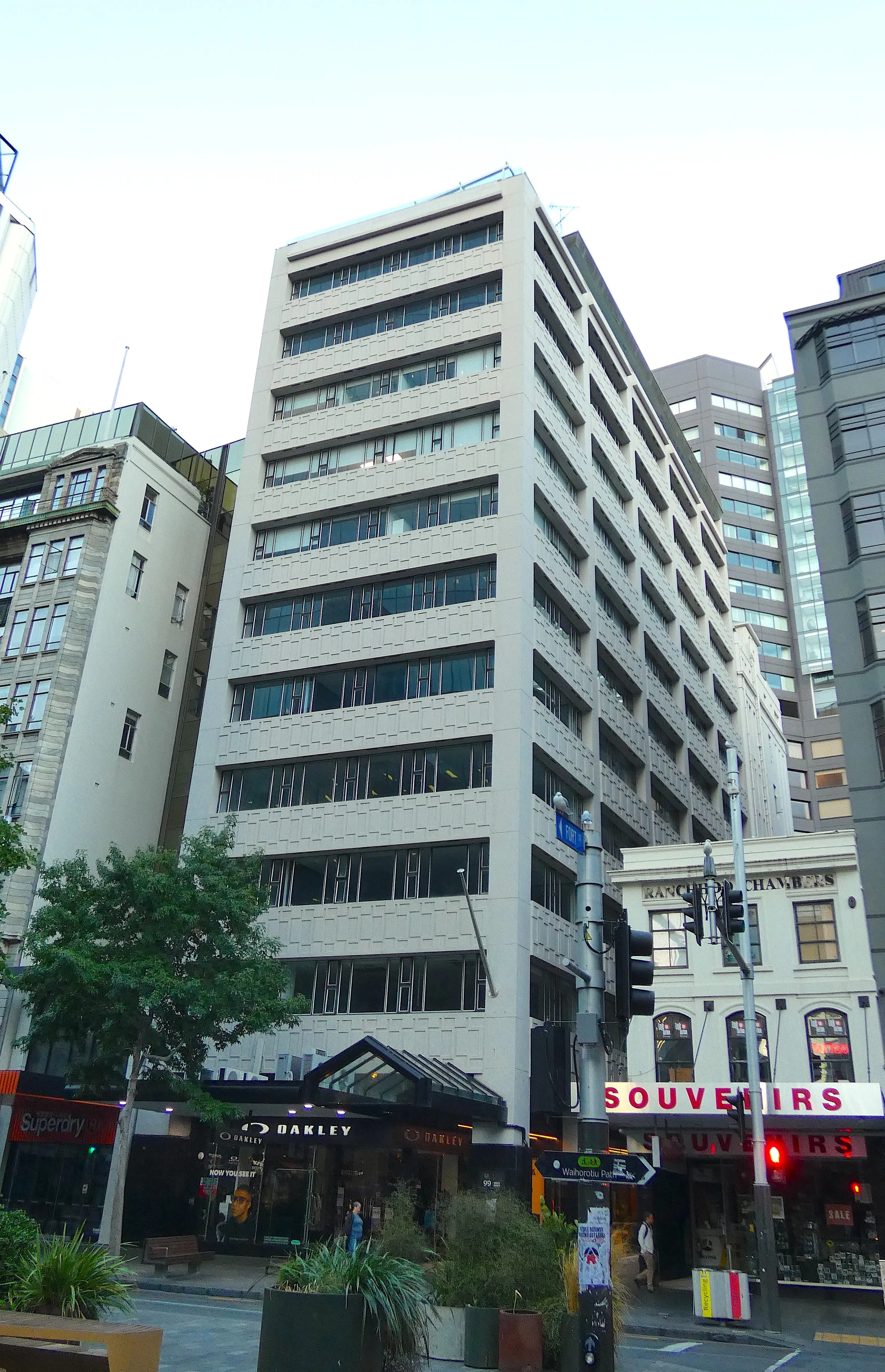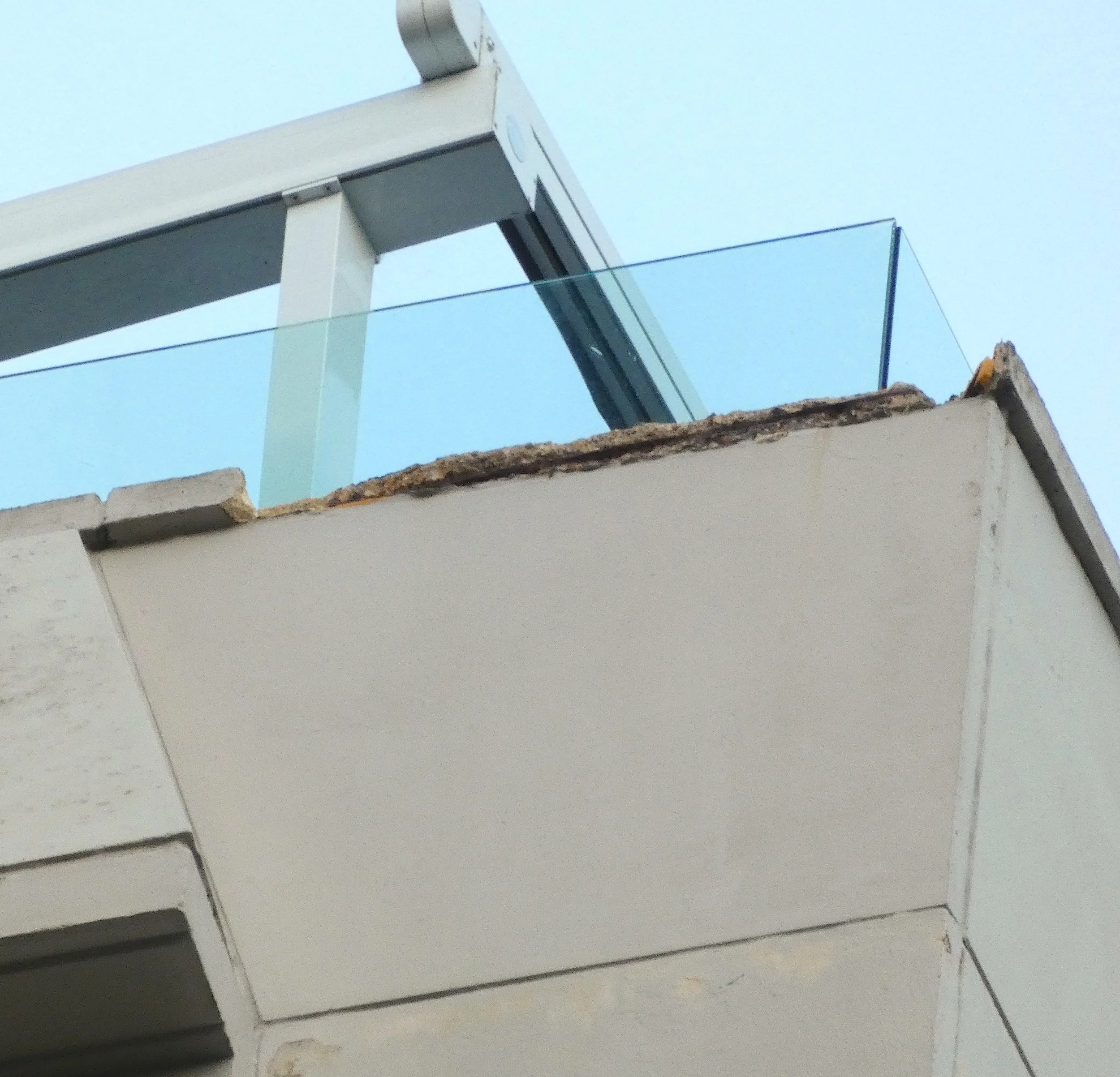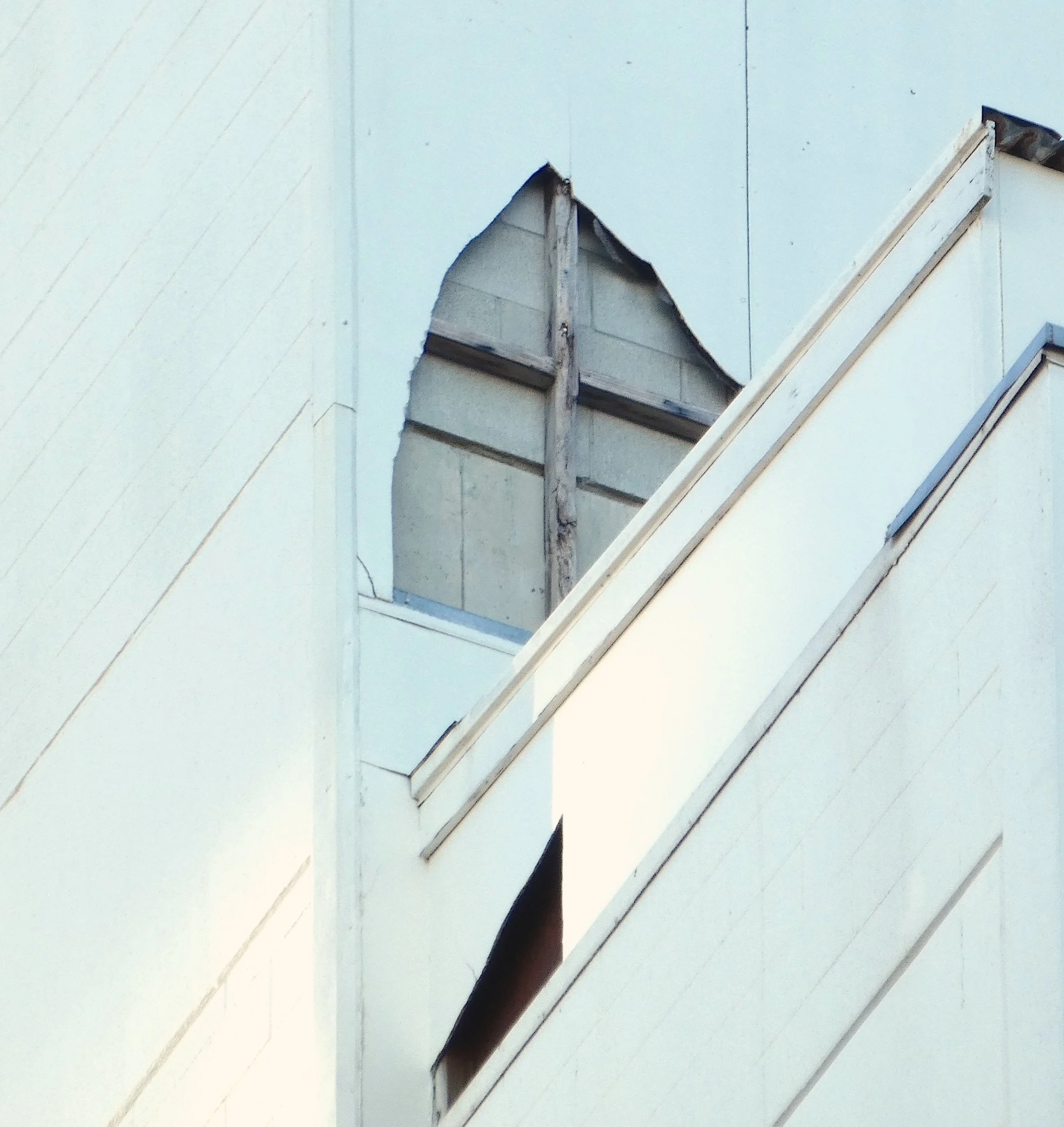For those of us familiar with facades to older, multi-storey buildings, the risk these can pose to those using the footpaths and roads below is nothing new. For two unfortunate passers by, this risk came crashing down on 10 February in the form of ‘concrete’ falling from the facade of 99 Queen Street, Auckland, causing them injury.
99 Queen Street, Auckland
Building owners in New Zealand too often take a reactive, rather than proactive approach to building maintenance. The problem taking this approach with mid- to high-rise facades is that issues that lead to incidents like this one are often not identified until they are already in a potentially dangerous condition.
It will be of no comfort to those who wander the streets of our larger cities that facade failures with the potential to cause harm are worryingly common. Similar incidents have occurred in Dunedin and other major cities around the world, a number of which have imposed mandatory inspection regimes following fatalities.
The unfortunate victims of the facade failure at 99 Queen Street have been left understandably concerned and wondering what caused the falling concrete that injured them. We have not been involved in the post-incident abseil inspections to determine the precise cause and implications of this case. However, the presence of damaged parapet coping stones to the roof terrace can be seen from street level. Evidence of steel corrosion in the form of rust staining can also be seen to both the damaged parapet and, from media reporting, the debris that fell from the building.
99 Queen Street roof terrace: Evidence of damage to parapet coping*
Concrete material typically falls off a building for one of two reasons; a failure of the connection securing an element to a building, or a failure of the element itself. The issue at 99 Queen Street falls into the latter group.
While concrete is one of the more robust building materials we have available, it is not invulnerable and is at risk of specific defects that often develop as a building ages.
Despite concrete being a porous material, steel reinforcement generally only corrodes when the concrete itself is compromised. This typically occurs due to contamination by chlorides (salts), or the slow process of carbonation to exterior concrete. Older, thinner pre-cast concrete components used on facades are particularly susceptible to the latter. Both of these issues can also be caused, or accelerated by coastal environments and the presence of cracking to the concrete.
Once the pH of the concrete is altered by these processes, reinforcement will corrode in the presence of moisture. The volume of the rust this generates can be 5 to 10 times the original steel volume. The forces exerted are enough to progressively break open the surrounding concrete, with an ever increasing risk of material being dislodged.
Images of various buildings, Queen Street, Auckland, March 2025.*
The reported response from Auckland Council regarding the incident at 99 Queen Street identifies the cause as water ingress. While not incorrect, this is somewhat of an over-simplification of the processes that typically lead up to failures, that may themselves be symptomatic of wider issues. The risk that other concrete units might be subject to the same mechanisms of failure needs to be investigated before the ongoing and future risk of failure can be determined.
Making safe works were evident to both ends of the parapet wall fronting onto 99 Queen Street, suggesting a similar failure to a second location.
Understanding the wider risks and implications for a facade where concrete has failed generally requires detailed, professionally-led investigation. This might include obtaining and testing concrete samples, and reinforcement cover surveys. With the information from such investigations, an appropriate strategy for maintenance, remediation or managing any risks can be developed.
Example of other defects to high-rise buildings: Missing fibre cement cladding to a mid to high-rise building adjacent to Queen Street.*
Damage by expansive corrosion is not limited to reinforcement and can occur to any other steel components embedded in, or fixed into concrete, masonry and plastered facades. Unlike reinforcement, such steel components tend to lack the natural protection offered by concrete.
While the focus of this article is on defects of a nature similar to those which appear to have lead to the injuries at 99 Queen Street, failure due to expansive corrosion is only one of the numerous risks associated with facades that are defective or in disrepair. Copper Seed’s Victoria Richardson’s posts Look Out Below and Time and Gravity Bite provide some great examples.
One of the more concerning and insidious risks relating to concrete cladding panels is the potential for failure of the connections that secure these panels to a building. While a 7.5cm cube of concrete can weigh around 1kg, the possibility of a whole concrete panel falling of a building is truly terrifying. In 2009, a woman celebrating a birthday in a restaurant in Montreal was killed by such an event. Leaks, detectable or otherwise, can lead to the corrosion and failure of steel connections holding cladding panels to a building. As this deterioration occurs within the construction of the facade, identification requires an understanding of the causal factors and risks to direct targeted, invasive investigation.
Failure to a sill to a New York apartment leading to a fatality (Source: NYC Dept of Building)
It’s important that, when events like that to 99 Queen Street happen, we recognise the wider risks that our buildings can present, rather than dismissing the incident as a ‘one-off’. Recent statistics published by New York City show that only 36% of facades to buildings over 6 storeys were deemed safe for the next 5 years without intervention. This is despite the incentive provided by a litigious society with lawyers that specialise in multi-million dollar law suits for people injured by things falling from buildings. We, on the other hand, have ACC.
We cannot rely on already over-stretched councils to monitor the safety of our building facades and dangerous building notices issued by councils after an event are always going to be the ambulance at the bottom of the cliff.
The duty to prevent injuries or near misses to building users and members of the public that can reasonably be avoided falls on the shoulders of building owners, property managers and any other person conducting a business or undertaking (‘PCBU’) involved in the management and maintenance of the building. Under the Health & Safety at Work Act 2015, the obligations of a PCBU extend the safety of the wider public and include ensuring, so far as is reasonably practicable, the provision and maintenance of safe structures.
Meeting these duties requires periodic inspections of facades by technically qualified professionals to produce a facade condition report. As well as identifying risks, a good quality facade condition report provides information key to planning future maintenance, repair, remediation or making safe works.
Those cities and states that have introduced mandatory inspection regimes require periodic inspection of mid- to high-rise facades by qualified professionals with standardised reporting to the local or state authority. The process is similar to, albeit more involved and less frequent than our warrant of fitness system. For example, in New York and Quebec, inspections are done every 5 years, in Singapore, every 7.
Facade inspection being conducted by Mike Gray. Credit: Dan Scott
Hands-on, up-close inspection of a facade is generally considered the gold standard as this permits close and tactile examination required to identify certain issues. On taller buildings, this generally dictates the need for abseil inspection, and there are relatively few experienced building professionals able to offer this service. UAV or drone surveys permit live or post-survey visual analysis by one or more professional disciplines. While the use of UAVs has certain restrictions and limitations, where available, these can be a cost-effective way of assessing the general condition of facades and any risks these might present, and can inform and direct further, targeted or sample abseil inspections. UAV surveys can also feed into Asset Inspection Platforms, a BIM-like technology that can prove valuable for managing maintenance and repair.
While serious facade deterioration tends to present later in a building’s life, a proactive approach to understanding and maintaining facades in earlier years is likely to reduce overall maintenance costs associated with costly but avoidable failures arising from a solely reactive approach.
As a final note, it’s striking just how many unique architectural and heritage gems are tucked away above the identikit storefronts of our cities. Rather than allowing these beautiful facades to slowly deteriorate, proactively maintaining them serves to preserve this rich architectural history for future generations who care to look up.
* Photographs show facade disrepair noted to buildings on or adjacent to Queen Street, Auckland CBD on 11 March 2025 for example purposes only. The matter of whether and to what extent the issues shown in the photographs present a current or future risk is subject to a number of factors, including (but not limited to) the nature, extent and severity of the defect, making safe works undertaken, planned repair and maintenance works, risk management strategies (including regular inspections and making safe works), the propensity for the defect to dislodge materials, and the height and location of the defect.
Mike Gray is a chartered building surveyor and IRATA qualified rope access technician.
Axiom Building Consultants are New Zealand’s only high access specialist chartered building surveyors that are qualified to undertake inspections by UAV (drone), elevated work platforms, fall arrest systems and industrial rope access.
Contact us to arrange a professional condition assessment of your building facade.
All content is copyright by Axiom Building Consultants and must not be reproduced in part of whole without written consent.













